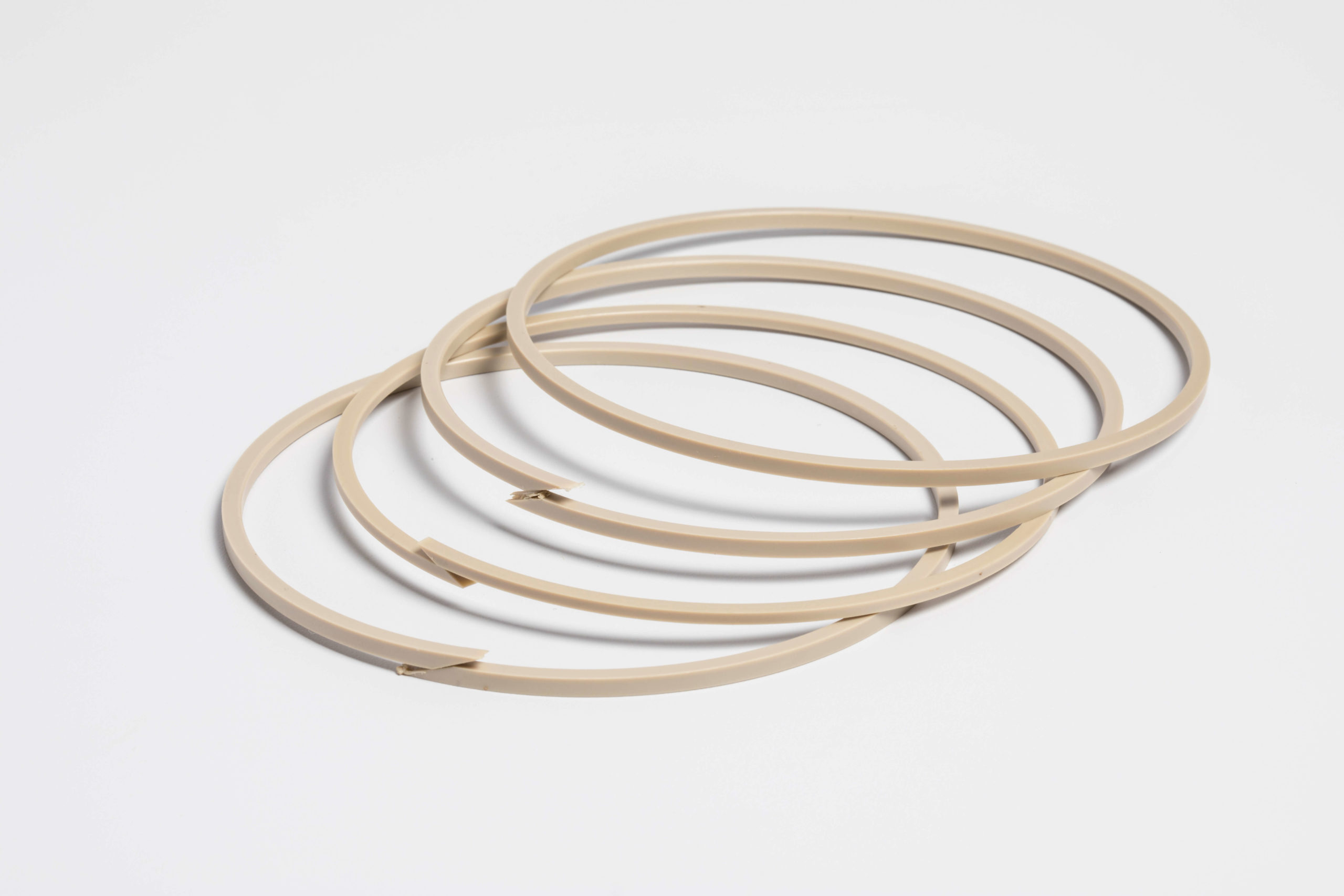Backup rings in high-pressure sealing systems address face extrusion failure in both dynamic and static seals found in high-pressure systems. Extrusion in sealing occurs when pressurized fluid forces the seal material into the clearance gap between mating surfaces, compromising seal performance. However, backup rings are a simple, low-cost (but critical) solution for extending the service life and maintaining the performance of extreme sealing conditions.
The Challenge of Seal Extrusion in High-Pressure Applications
Seal extrusion happens when pressurized fluid forces part of a sealing element into the clearance gap between mating hardware surfaces. Under high pressure, the soft material deforms plastically and begins to “flow” into this gap, where it can be pinched, torn, or permanently deformed. The result from seal extrusion is nibbling damage along the edges, rapid loss of sealing capability, and, in severe cases, catastrophic leakage.
Extrusion not only shortens seal life but also accelerates equipment wear, drives unplanned downtime, and raises operating costs in hydraulic, pneumatic, and process systems. The causes of seal extrusion are typically high pressure differentials ( > 1500 psi) and/or significant clearance gaps, exacerbated by the use of elastomers or polymers that deform plastically under a load. Seal extrusion can be difficult to avoid under certain circumstances, but that is where backup rings come in.
Backup Rings in High-Pressure Sealing Systems: Purpose and Function
Backup rings in high-pressure sealing systems are annular support components that are installed next to a seal, such as an O-ring or a spring-energized seal. They act as an effective barrier to keep the seal from being forced into the clearance gap.
Backup rings come in different configurations, including single-ring, double-ring (for applications with bi-directional pressure), as well as split vs solid rings. Regardless of the configuration chosen, it is critical to achieve a precise fit because too loose undermines support, while too tight causes problems with assembly.
Material Considerations for Backup Rings in High-Pressure Sealing Systems
The three most commonly used materials for backup rings are PTFE, PEEK, and Nylon. However, other materials such as UHMW-PE, filled PTFE blends for wear resistance, reinforced polymers for high PV limits, may be used.
PTFE
PTFE is an excellent option for backup rings with its extremely low coefficient of friction and extensive chemical compatibility. It works exceptionally well for applications requiring dynamic sealing or very low temperatures. Its primary limitations are the possibility of cold flow under sustained loads, so it might not always be suitable for extreme pressure conditions.
PEEK
PEEK is another good option for use as a backup ring with its high mechanical strength and excellent resistance to extrusion, as well as its thermal stability up to ~250°C. It also possesses exceptional resistance to extrusion. While it may be a more costly option compared to other polymers, it has found widespread application in industries such as aerospace, oil and gas, and high-performance hydraulics.
Nylon (PA)
Nylon works extremely well in moderate conditions with its strength, and it has a more economical price compared to PEEK and PTFE. However, it does have some critical limitations that including swelling and water absorption, both of which can heavily impact tolerances.
Design and Geometry Options
Solid backup rings provide the best extrusion resistance but can be challenging to install. Split rings can simplify the assembly process, but may allowed extrusion under extremely high loads, which essential defeats the purpose of having a backup ring. Another alternative is the use of spiral cut designs, which balance easier installation (without requiring excessive stretching) with maintaining good support for the seal. Contoured cuts such as scarf of step joints further reduce weak points found at splits.
For pressure direction, a single ring works when the load comes from one side, while double rings are necessary for bidirectional pressure. In every case, the trade-off is clear: easier installation often means slightly higher extrusion risk at the joint.
Engineering Considerations for Integration
Housing tolerances are critical for backup rings. Excessive clearance gaps increase the risk of extrusion, while precise fits provide reliable support. Single rings work well when pressure comes from one direction. However, double rings are required when it fluctuates or is bidirectional. Temperature adds another layer of complexity. Heat accelerates creep and changes dimensions through thermal expansion, which weakens long-term performance. Material compatibility is also important. Chemicals, lubricants, or swelling agents can reduce hardness and shorten service life. In failure analysis, extrusion often appears as edge nibbling or shearing. Compression set, on the other hand, leaves the ring permanently deformed. Recognizing the difference is key to preventing repeat issues.
Conclusion
Backup rings extend seal service life by preventing premature failure and protecting against extrusion. They reduce downtime and maintenance costs, which is especially valuable in high-value systems. Reliability and safety improve in critical applications where failures aren’t an option. They also make it possible to use softer elastomers for better sealing performance without increasing the risk of extrusion.
Investing in the right backup ring extends seal life, reduces failures, and ultimately saves money and downtime. Contact us at Advanced EMC to learn more about backup ring solutions.

